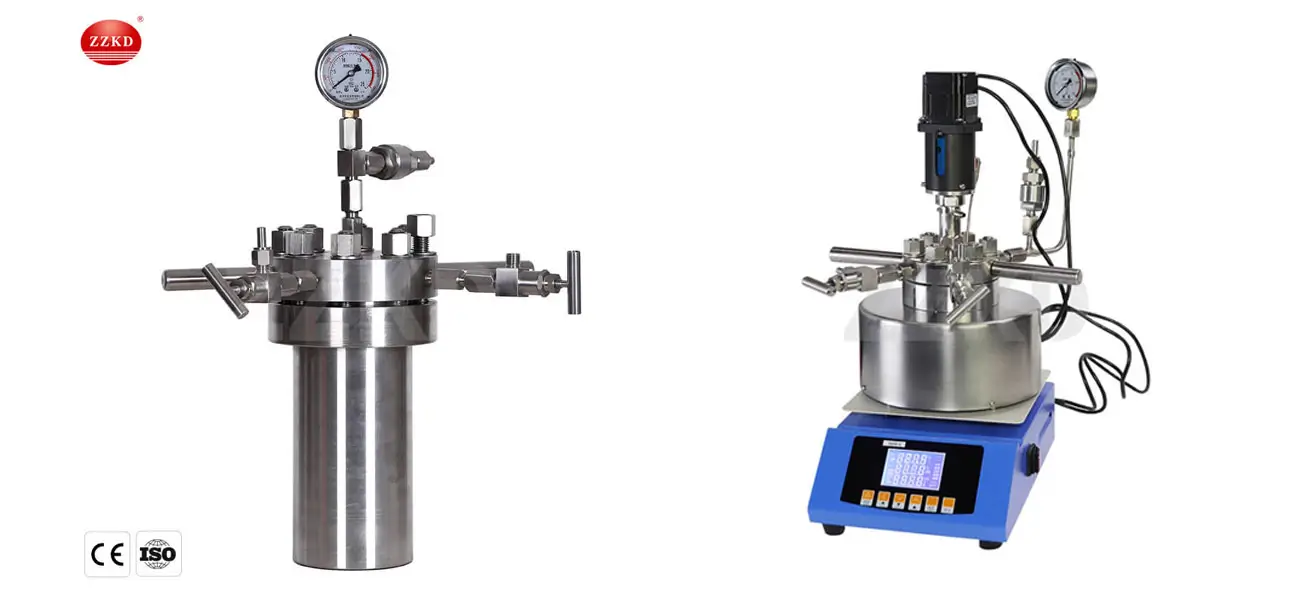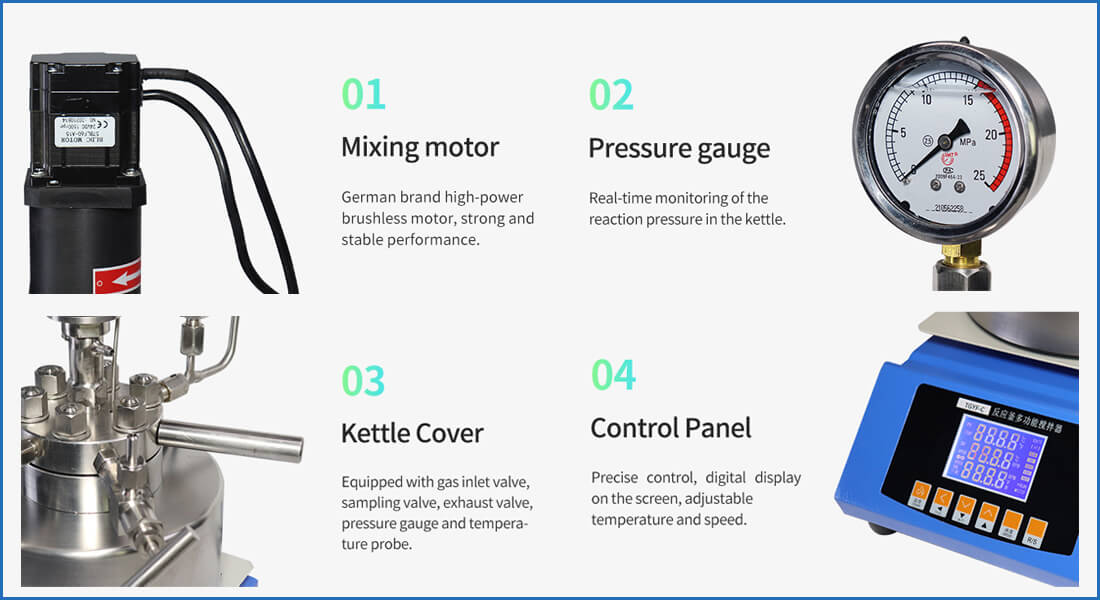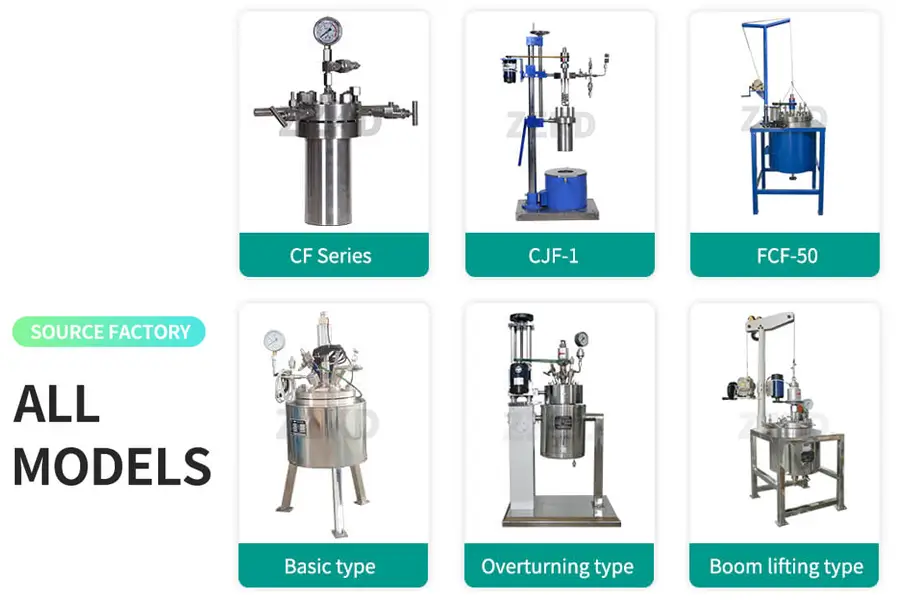High Pressure Batch Reactor: Guide for Industries and Researchers
If you’re working in industries like chemicals, pharmaceuticals, materials science, or energy, you’ve likely heard of high pressure batch reactors. These powerful machines are essential for conducting reactions that require precise control over pressure and temperature. But what exactly are they? How do they work? And why should your company invest in one?
In this article, we’ll answer all your questions about high pressure batch reactors. We’ll explain their uses, benefits, safety features, and how to choose the right one for your needs. Let’s dive in!
What Is a High Pressure Batch Reactor?
A high pressure batch reactor is a sealed container designed to carry out chemical or physical processes under controlled high-pressure conditions. Unlike continuous reactors, which process materials non-stop, batch reactors handle a fixed amount of material at a time. This makes them ideal for small-scale production, research, and testing.
These reactors are built to withstand extreme pressures (often up to 10,000 psi or higher) and temperatures, enabling reactions that would otherwise be impossible at normal atmospheric conditions. They’re commonly used for processes like hydrogenation, polymerization, catalysis, and nanoparticle synthesis.

High Pressure Chemical Reactor
How Does a High Pressure Batch Reactor Work?
Let’s break down the working principle of a batch reactor step by step:
Loading Materials: The reactor is filled with reactants (liquids, gases, or solids) through ports or valves.
Sealing: The vessel is tightly closed to create a pressure-tight environment.
Heating/Cooling: External jackets or internal coils adjust the temperature.
Pressurization: Inert gases (like nitrogen) or reactive gases (like hydrogen) are pumped in to reach the desired pressure.
Mixing: Stirrers or agitators ensure even distribution of heat and reactants.
Reaction Monitoring: Sensors track pressure, temperature, and pH in real time.
Product Recovery: After the reaction, the vessel is depressurized, and the product is collected.
The entire process is customizable, making batch reactors versatile tools for labs and factories alike.
Key Applications of High Pressure Batch Reactors
Why do industries rely on these reactors? Here are some common uses:
1. Chemical Synthesis
High pressure accelerates reactions, reduces processing time, and improves yields. For example:
Hydrogenation: Adding hydrogen to oils (e.g., making margarine).
Polymerization: Creating plastics like polyethylene.
Catalysis: Developing catalysts for cleaner fuel production.
2. Pharmaceutical Manufacturing
Batch reactors help synthesize active pharmaceutical ingredients (APIs) under sterile, controlled conditions. They’re also used for:
Drug crystallization.
Steroid production.
Vaccine development.
3. Advanced Materials
From carbon nanotubes to ceramic coatings, researchers use high pressure reactors to:
Synthesize nanomaterials.
Create heat-resistant alloys.
Develop battery components (e.g., lithium-ion cathodes).
4. Energy and Environment
Biofuel Production: Converting biomass into fuel.
Carbon Capture: Testing CO2 sequestration methods.
Waste Treatment: Breaking down hazardous chemicals safely.
Advantages of Using a High Pressure Batch Reactor
Why choose a batch reactor over other types? Here are the top benefits:
Precision Control: Adjust pressure, temperature, and mixing speed for optimal results.
Scalability: Lab-scale experiments can be replicated for industrial production.
Versatility: Compatible with gases, liquids, and solids.
Safety: Built-in features like pressure relief valves and rupture disks prevent accidents.
Cost-Effective: Lower operational costs compared to continuous reactors for small batches.

How to Choose the Right High Pressure Batch Reactor
Not all reactors are created equal. Here’s what to consider before buying:
1. Material Compatibility
Stainless Steel: Resists corrosion and handles most chemicals.
Hastelloy/Titanium: For highly corrosive substances (e.g., acids).
Glass-Lined: Ideal for reactions requiring visual monitoring.
2. Pressure and Temperature Range
Match the reactor’s limits to your process requirements. For example:
Standard models: Up to 5,000 psi and 350°C.
Custom designs: Up to 30,000 psi and 500°C.

3. Safety Features
Look for:
Automatic pressure release systems.
Over-temperature alarms.
Leak-proof seals (e.g., magnetic drives).
4. Customization Options
Can the reactor be tailored to your needs? Examples include:
Multiple ports for adding reactants.
Advanced stirrers for viscous mixtures.
Data logging and remote control capabilities.
5. Supplier Reputation
Choose a manufacturer with:
International certifications (e.g., ASME, CE).
Proven experience in your industry.
Strong after-sales support (maintenance, spare parts).
Safety Tips for Operating High Pressure Reactors
Safety is paramount when working with high-pressure equipment. Follow these guidelines:
Regular Inspections: Check seals, valves, and sensors before each use.
Training: Ensure operators understand emergency protocols.
Pressure Limits: Never exceed the reactor’s rated capacity.
Ventilation: Use reactors in well-ventilated areas to avoid gas buildup.
Emergency Shutdown: Install fail-safe systems to halt operations if anomalies are detected.

Why Choose Our High Pressure Batch Reactors?
As a leading exporter of high pressure reactors, we’re committed to delivering quality and reliability. Here’s what sets us apart:
Robust Construction: Our reactors are made from premium materials for long-term durability.
Custom Solutions: Tailor reactor size, material, and features to your workflow.
Global Compliance: All products meet international safety and quality standards.
Expert Support: Our team assists with installation, training, and troubleshooting.
Competitive Pricing: Get high-end performance without breaking the bank.
Frequently Asked Questions (FAQ)
Q1: How long does a batch reactor last?
With proper maintenance, our reactors have a lifespan of 10–15 years.
Q2: Can I automate the reactor?
Yes! We offer PLC-controlled models with real-time monitoring.
Q3: What maintenance is required?
Replace seals and gaskets annually.
Clean the vessel after each use.
Calibrate sensors every 6 months.
Q4: Do you provide spare parts?
Absolutely. We stock parts like valves, stirrers, and pressure gauges for quick delivery.
Q5: Can the reactor handle explosive reactions?
Our explosion-proof designs include pressure containment systems and spark-resistant materials.
Conclusion
High pressure batch reactors are game-changers for industries that demand precision, safety, and versatility. Whether you’re developing new materials, manufacturing drugs, or producing specialty chemicals, investing in a reliable reactor can boost efficiency and product quality.
At [Your Company Name], we combine cutting-edge engineering with decades of expertise to deliver reactors that meet your toughest challenges. Contact us today to discuss your requirements and discover how our solutions can power your success!
